Technically, Styrofoam is 100% recyclable, but the reality isn’t always so simple. Some recycling centers accept only certain types of Styrofoam. Most don’t accept it at all.
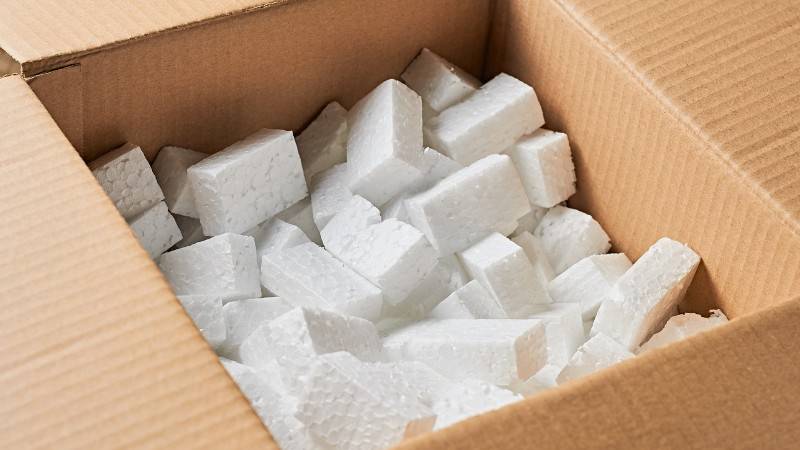
Styrofoam is everywhere. It’s in insulation, packaging, beverage cups, egg cartons, disposable plates, trays, air conditioners, ovens, blenders… the list goes on and on.
Three million tons of styrofoam are manufactured in the US every year. 80% of the total styrofoam produced in the US ends up in landfills. Approximately 1,369 tons of styrofoam are buried in US landfills daily.
The problem is exacerbated because styrofoam is non-biodegradable. It needs 500 years to decompose. So, can styrofoam be recycled? Yes, it can, but it’s not as easy as it may seem. Here’s everything you should know about styrofoam recycling, including why many recyclers opt not to do it.
Is Styrofoam Recyclable?
Yes, styrofoam is recyclable. However, you can’t place styrofoam in outdoor and commercial recycling bins. Styrofoam can only be recycled at specific recycling centers that have the necessary equipment.
Styrofoam is one of the hardest materials to recycle. It’s 95% air and is lightweight and bulky. For example, think about how much space it takes up in trash cans. Do you want styrofoam taking up this space in commercial recycling bins?
Luckily, some recycling programs accept styrofoam waste. Some programs accept styrofoams at special drop-off locations or collection events.
Also, some municipalities have curbside recycling programs that have specialized equipment so that you can put your styrofoam in the recycling bin. However, the number of these municipalities is relatively small, so you need to find recycling facilities that accept styrofoam.
Note: There is no proper way to recycle #4 Styrofoam or Low-Density Polyethylene foam (LDPE/PELD). The best option is to reuse them as much as possible. If that's not possible, you need to send them to landfills.
What Is Styrofoam?
Styrofoam is a trademarked closed-cell extruded polystyrene foam (XPS) produced by the Dow Chemical Company and introduced to the US market in 1954. It’s most commonly used as insulation for walls, roofs, and foundations.
Nowadays, Styrofoam also refers to different polystyrene foam products (the same way we use Kleenex to refer to different tissue brands).
The white, rigid, crunchy stuff we use most commonly is technically expanded polystyrene foam or EPS. It’s most commonly found in the food industry for takeout containers, single-use plates, and cups. Another common use is as packing peanuts. Overall, EPS is everywhere and has a wide variety of uses. It’s commonly denoted by the recycling symbol #6. However, this symbol is misleading. In fact, it means Styrofoam needs special equipment to be recycled.
Why Is Styrofoam Difficult to Recycle?
Styrofoam Recycling Is Expensive
Styrofoam is mostly air. It’s big, bulky, and difficult to transport because it takes up a lot of room. Also, Styrofoam is expensive to recycle. Some estimates show it costs $3,000 to recycle one ton of Styrofoam (on the other hand, it costs less than $100 to recycle one ton of paper).
Recycling Styrofoam is so expensive because recycling centers have to invest in special machines that can process the material into condensed blocks. These machines are more expensive than the market rate for recycled Styrofoam, which means recyclers lose money by recycling Styrofoam.
Also, most local recycling centers don’t have the necessary equipment for Styrofoam recycling, so it has to be sent to a centralized plant, which makes the whole process very costly.
Finally, even with the necessary equipment, it’s difficult to revert Styrofoam to its basic foam.
The Issue of Styrofoam Contamination
Styrofoam is porous. Contaminated Styrofoam can’t be recycled, which means takeout containers and cups end up in landfills. Also, it’s extremely difficult to completely clean Styrofoam food containers. You also need to remove any stickers, dirt, or sellotape before taking Styrofoam to be recycled.
Moreover, if you throw Styrofoam into the recycling bin, you risk contaminating the entire bin. This can lead to your recycling being rejected when it arrives at the recycling facility.
Finally, EPS has harmful chemicals. If they are broken down during the recycling process, the toxins can end up in products we use every day.
Can’t Be Reused In the Food Industry
Recycled Styrofoam can’t be reused for products that come in contact with food. Styrofoam is sterilized during the recycling process and is often used to make packaging for other materials. However, there are health concerns over it, and only new EPS can be used for food packaging. Essentially, this reverses the positive impact of Styrofoam recycling.
This also leads to the lack of demand for recycled Styrofoam and is another obstacle to having widespread Styrofoam recycling.
How To Recycle Styrofoam The Right Way?
Even though there are many obstacles to styrofoam recycling, it’s possible to do it. We’ll break down how and where styrofoam is recyclable.
How To Recycle Styrofoam?
Here’s how to recycle Styrofoam step-by-step at our Burlingame EcoCenter:
- Gather all your Styrofoam for recycling. Make sure it’s clean and unmarked. We only accept Styrofoam #6 Expanded Polystyrene (EPS). Bring the styrofoam to our recycling center to be redensified. If you can't drop it off, we also offer a business recycling pick-up service. We can come to your location and get all the recycling items.
- We charge $5 for a 30-gallon bag of styrofoam. Packing peanuts and sheets of unpopped bubble wrap are free. We’ll feed the unsoiled styrofoam into our Plastic Foam Densifier (PFD) XT200 machine, which reduces it to about 1/90th of its original volume. The machine shreds the foam, then heats it, and pressurizes it into a paste, so it can be reused.
- We’ll reuse the condensed polystyrene foam for insulation sheets, ceiling molding, or construction materials. The foam can also be used for surfboards, public benches, toys, pots, cameras, and many other items. The possibilities are endless.
Another way styrofoam can be recycled is by mechanically chopping it down, cleaning, and turning it into recycled plastic resins (rLDPE or rPS). It can be used to make new products or blended with virgin plastic resins (for example, a 70% to 30% blend) to make new products.
Where To Recycle Styrofoam?
You can recycle styrofoam by finding a recycling facility that accepts it.
If you’re in the San Francisco Bay Area, GreenCitizen is open for drop-off recycling for individuals from Monday to Friday, 10 am until 6 pm.We also organize pick-up recycling services for businesses with a large amount of Styrofoam to recycle. Contact us to schedule a pick-up, gather all of the styrofoam for recycling, and place it in a room or area with easy storage (without staircases), and we’ll pick it up. Make sure your styrofoam is clean, white, and unmarked, or we can’t accept it.
Also, we can’t accept used food containers as they’ve been contaminated with oil and other food waste.
In case you don’t live in the SF Bay Area, we’ve got you covered. Use our Green Directory to find the recycling center close to you that accepts this material.
In the search bar, enter styrofoam, and in the location, enter your zip code or city. Press search, and we’ll give you a list of all styrofoam recycling facilities near you.
Understanding the Environmental Impacts of Styrofoam
Styrofoam has a hugely negative impact on the environment.
1. Takes up Space in Landfills
Styrofoam fills up 30% of total landfills worldwide. This is hugely problematic as landfills are fast becoming full.
Over a thousand tons of styrofoam is buried in US landfills each day, and billions of styrofoam cups from stores and restaurants end up in landfills and cause pollution. It’s estimated that the US will run out of landfill space in about 15 years.
2. Releases Toxic Pollutants
Styrofoam releases harmful air pollutants that contaminate landfills and impact the ozone layer. Moreover, styrofoam production also releases toxic pollutants. The manufacturing process releases 57 chemical byproducts, which cause both respiratory and environmental issues.
One of these byproducts is styrene, which is a carcinogen and irritates the skin, eyes, respiratory, and gastrointestinal tracts. Moreover, styrene can react with nitrogen oxides in the air and produce ground-level ozone, which is another toxic pollutant that impacts the lungs and leads to respiratory issues.
This is why many cities have banned the commercial use of styrofoam such as Seattle, Washington, Toronto, Paris, Portland, and more.
3. Animal Impact
Styrofoam harms animals that scavenge for food in landfills. It easily breaks apart into small pieces that can choke animals.
Moreover, styrofoam impacts sea animals. It’s extremely light, so it floats, and there are large amounts of styrofoam accumulated around coastlines.
4. Decomposes Slowly
Styrofoam biodegrades extremely slowly. It takes from 500 to one million years to decompose naturally. Moreover, it’s resistant to photolysis, which is decomposition by light.
Styrofoam is extremely stable because its atoms are bonded to one another. This strong stability makes it resistant to water, acids, bases, and salts, which ensures its long shelf life and makes it cost-effective for businesses.
However, the main downside to this chemical stability is that it takes ages to break down and remains in landfills for generations.
Styrofoam Alternatives That You Should Try
As more and more cities and states are imposing a ban on styrofoam, there’s a rise in styrofoam alternatives.
Here are our best styrofoam alternatives you can use every day.
1. Biodegradable Peanuts
Biodegradable peanuts are made of non-toxic corn starch or wheat. You can add these packing materials to your compost piles.
Biodegradable peanuts are a great eco-friendly replacement for styrofoam peanuts. Use them as bubble wrap to fill the void in containers or boxes.
There are several companies that manufacture biodegradable peanuts, and you can buy options such as:
- Static-free organic starch peanuts (there’s no electric charge, so they won’t stick to your clothes)
- Peanuts that decompose in water, so there’s no toxic waste left behind
These peanuts are even edible, but they don’t have nutritional value. However, their main drawback is that they are heavier than styrofoam peanuts, which means higher shipping costs. Also, they are more expensive to manufacture and take up space that could be used for food production.
2. Corrugated Bubble
Corrugated bubbles are another great substitute for bubble wrap. They are made of 100% recycled cardboard from post-consumer and post-industrial waste.
Plus, there’s an option to buy a corrugated bubble to your exact specifications. Once you no longer need it, it’s 100% recyclable and biodegradable.
3. Bamboo Packaging
Bamboo packaging is made of bamboo pulp, which is just like paper pulp. Bamboo pulp is made using only bamboo pulp or combined with wood pulp and straw pulp.
This packaging has high mechanical strength — it won’t tear easily. Businesses can use it for commercial purposes and put stamp printing paper or other advanced paper on it.
4. Crinkle Paper
Crinkle paper is another bubble wrap alternative. You can use it to fill the void for baskets or gift boxes.
It comes in different colors, so it's a great eco-friendly alternative to celebration streamers.
5. Mushroom Packaging
The vegetative part of a mushroom fungus and crop waste is used to make this product. It may seem funny, but large retailers, such as Ikea, are seeing its strengths and are using it instead of polystyrene.
This packaging contains mycelium, which decomposes in weeks. The result is less waste and better recycling.
6. PLA-Lined Paper
PLA or Polylactic Acid lined paper is a great substitute for styrofoam food packages. This is a plant-based resin made from corn starch. It can be used to make compostable food containers and cup liners. It’s resistant to water damage and can be used with hot and cold products. You can even use it in a microwave or the oven.
However, its main drawback is poor heat transfer. For example, a styrofoam cup protects you from getting burned, but a PLA-lined cup will get hot.
7. Mineral Filled Polypropylene
Mineral-filled polypropylene products have 50% less plastic compared to standard polypropylene products. They are made with mineral content, which reduces the amount of plastic required and can be used for both hot and cold food.
However, these products don’t completely eliminate the need for plastic. Plus, they aren’t recyclable.
FAQ
Yes, you can put Styrofoam in the recycling bin in some areas. However, there are many local governments that do not accept it in their curbside recycling programs.
You can dispose of large Styrofoam at a dedicated recycling center like GreenCitizen, where we compress it down to 1/90th of its original size.
You can recycle Styrofoam at home if there is a curbside recycling program in your area that allows you to put it in the recycling bin. You may also donate it to delivery persons that come to your door since they might be able to repurpose it as packing peanuts.
You can help turn old Styrofoam into many everyday items, including surfboards, ceiling molding, and coat hangers, if you recycle it at a dedicated center.
You can destroy Styrofoam by dissolving it with acetone but be warned that it’s dangerous from a health and environmental standpoint because doing so can release toxic carcinogens into the air.
Yes, Styrofoam egg cartons can be recycled if you take them to a specialized recycling center like GreenCitizen. In some cases, you can put them in a recycling bin, but only if your local government has a curbside recycling program.
No, vinegar will not dissolve Styrofoam because vinegar is not hot nor concentrated enough.
Acetone will dissolve Styrofoam, though it’s still not ideal for the environment, and it becomes difficult if you’ve got a lot to dispose of.
Do You Recycle Styrofoam?
So, can you recycle styrofoam? Yes, you can. However, this isn’t easy to do. Not many recyclers accept styrofoam because it requires special equipment, and there isn’t much demand for recycled styrofoam products, which makes the process expensive.
Luckily, you can turn to us. Drop your styrofoam for recycling if you live in the SF Bay Area, or use our Green Directory. We’ll make the process as affordable and convenient as possible, or we’ll help you find a recycler near you.
The best thing you can do for your and our planet’s health is to use styrofoam alternatives. Look for bamboo, mineral, shroom, and corn options as the best alternatives. This way, you won’t pollute the Earth for 500 years or more.

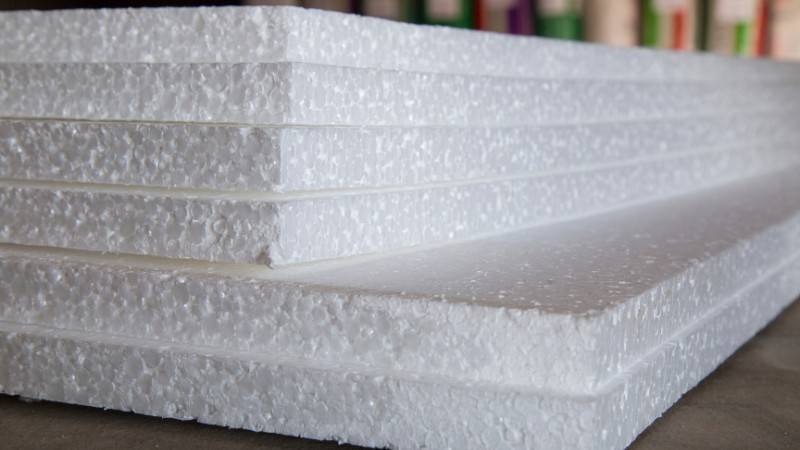
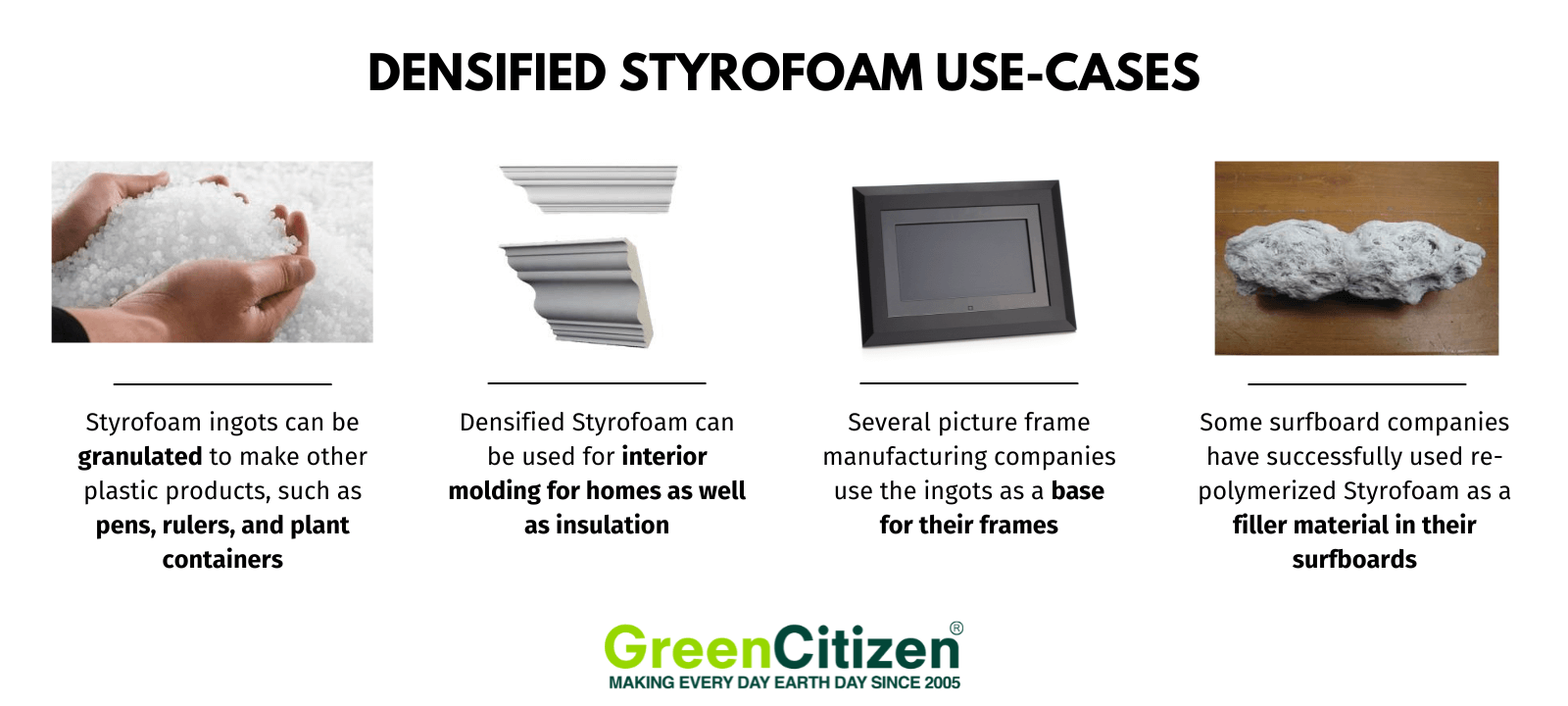
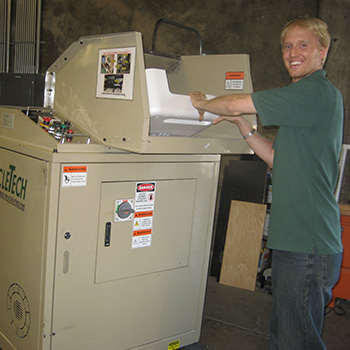
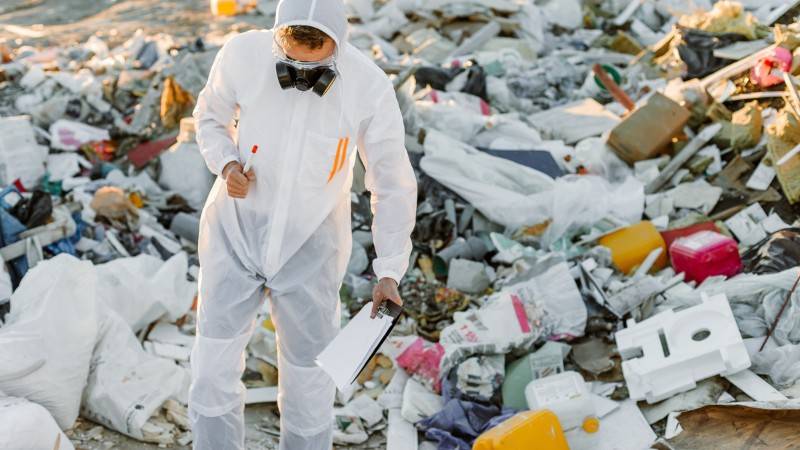
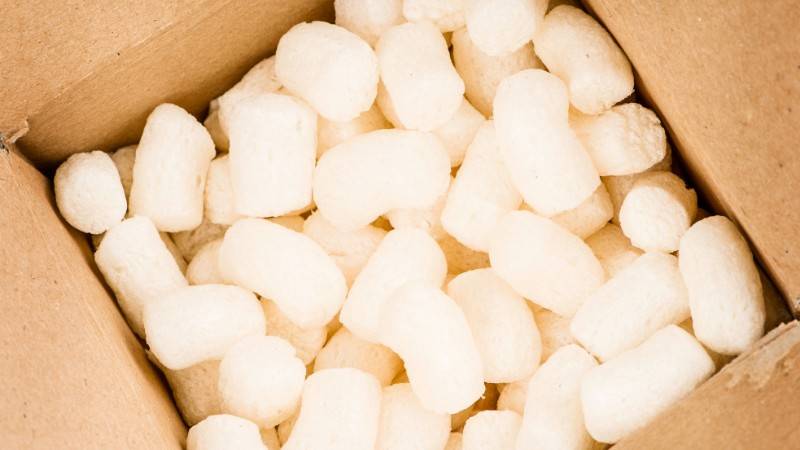
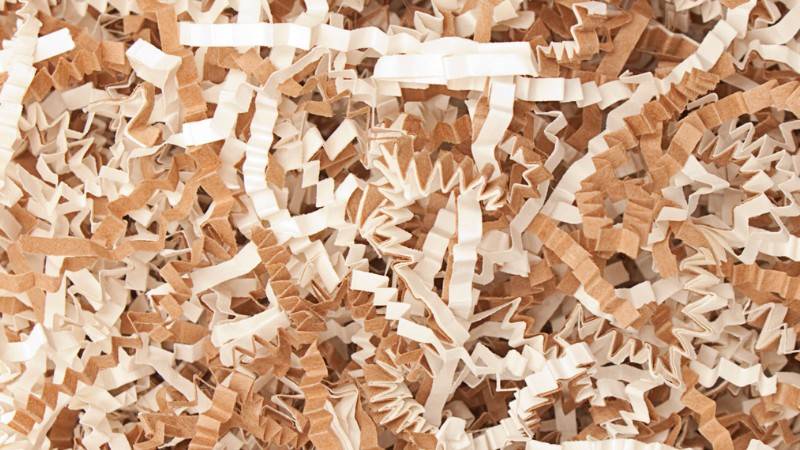









Can the 2000 solar generator be charged from an AC outlet.
GREAT CONTENT. LEARNED A LOT I DID NOT KNOW.
Pingback: Can You Recycle Styrofoam? | Discount Dumpster Rental
Pingback: Can You Put Styrofoam In The Recycling Bin? - Thinking Sustainably
I’ve been looking into recycling Styrofoam in my country and as well the concern of recycling in general. I have great hope that recycling can become a norm in our lives once we put it into practice the right way.
I wish someone can see my comment and privately email me please. I would love to get your assistance and acquire collaboration with this company. Much love and appreciation!
They always invent new things that can’t be recycled .